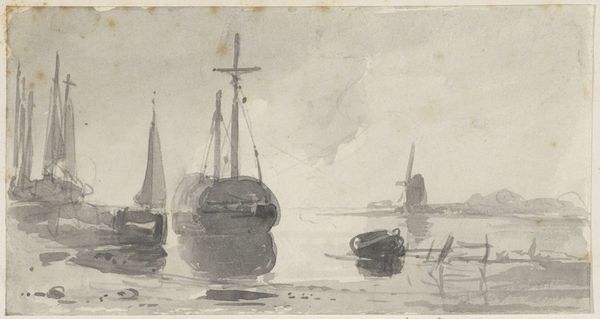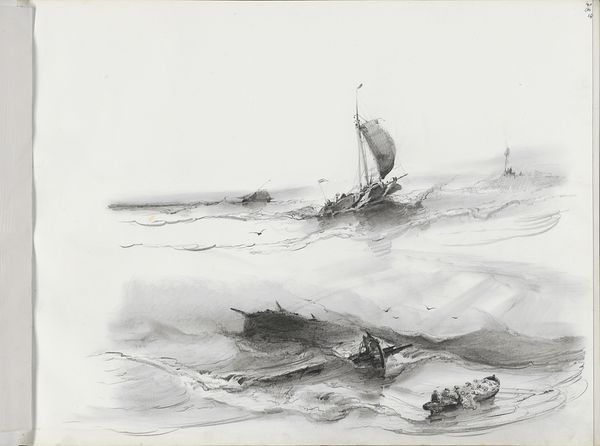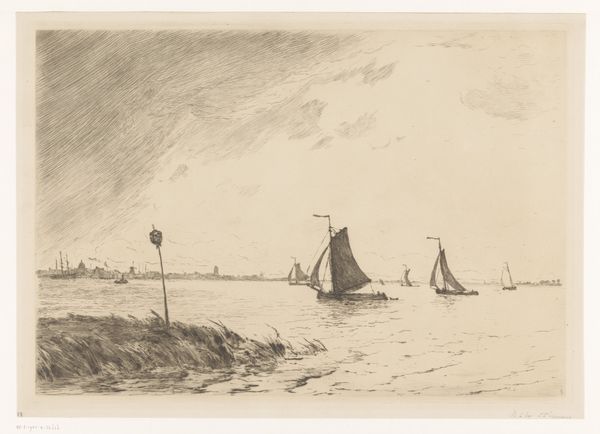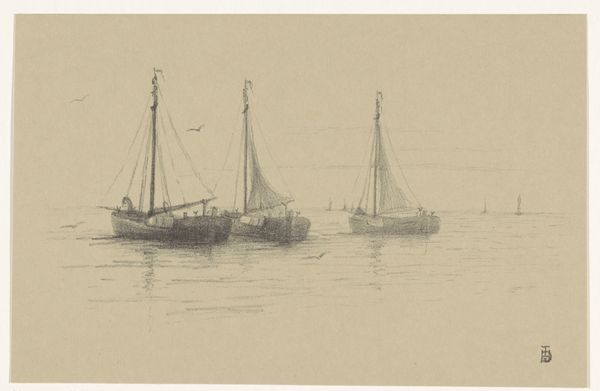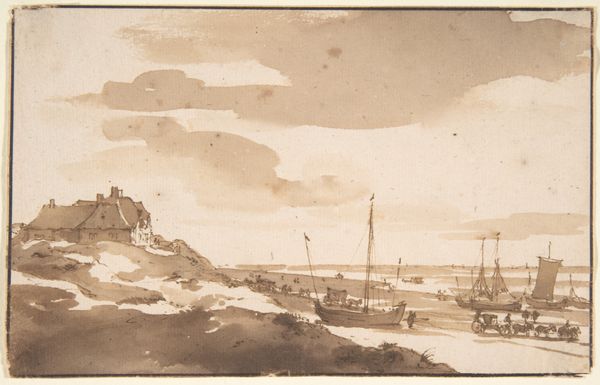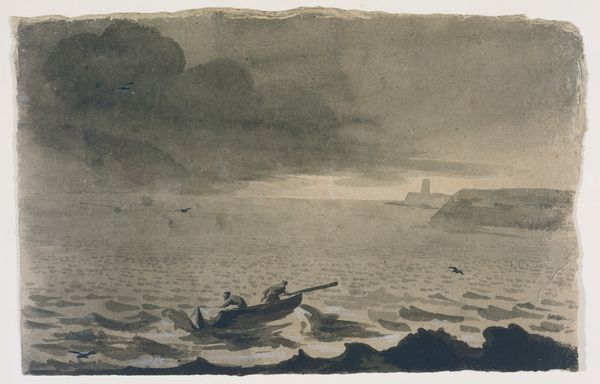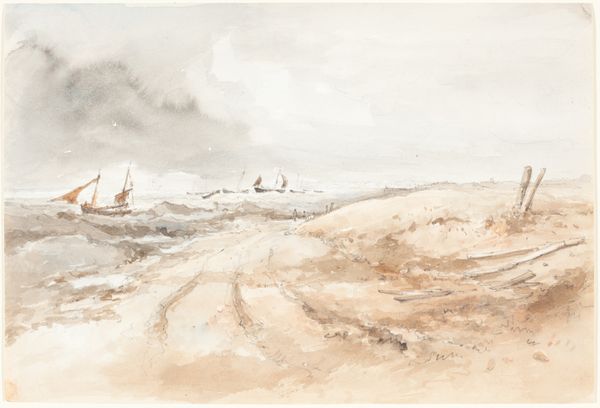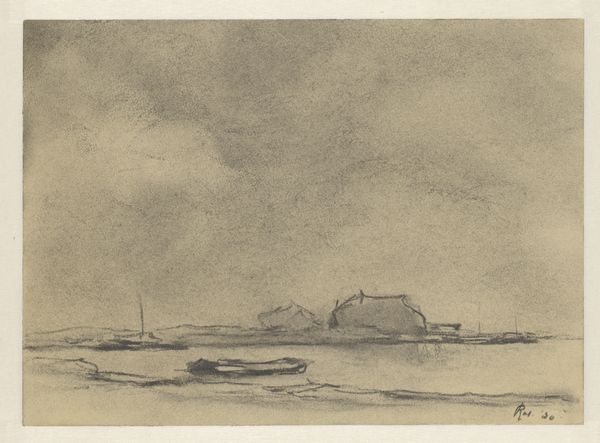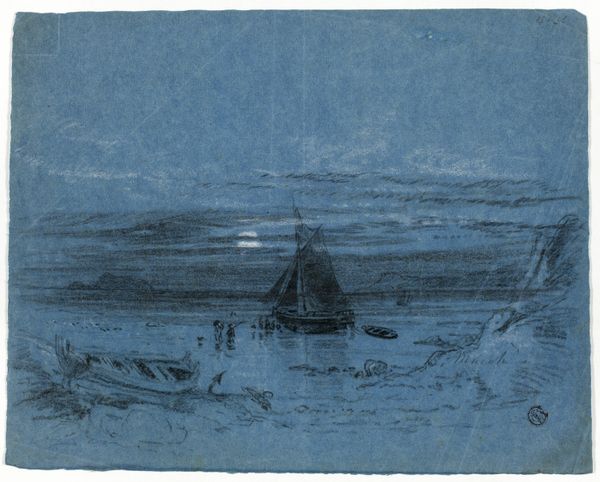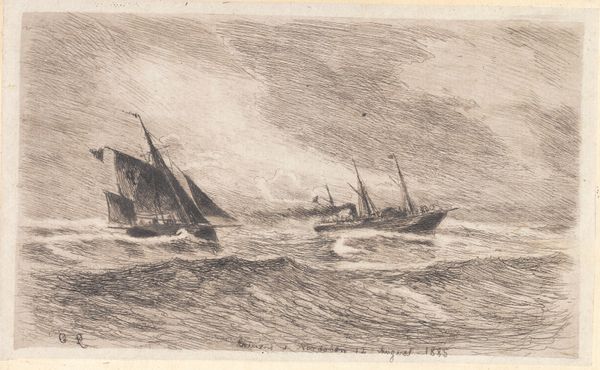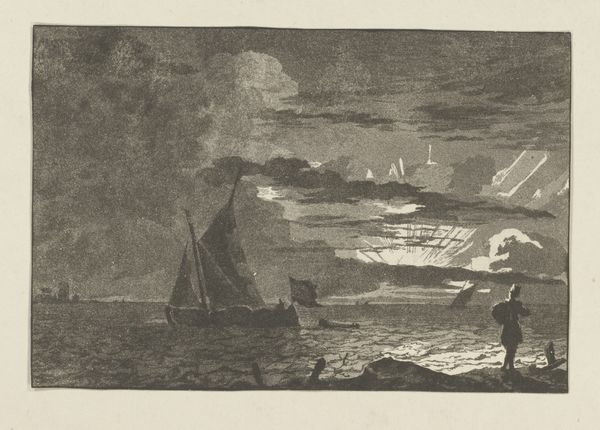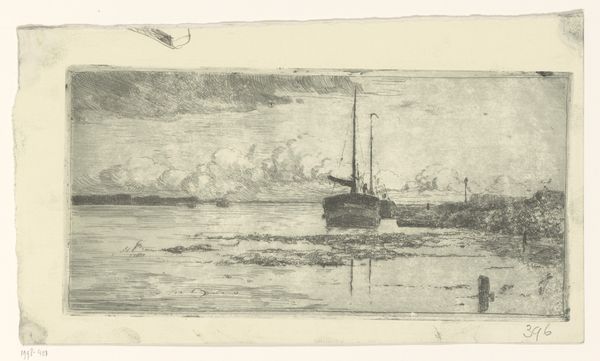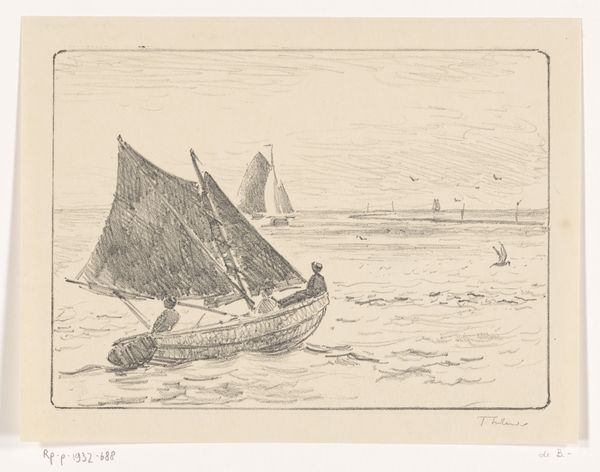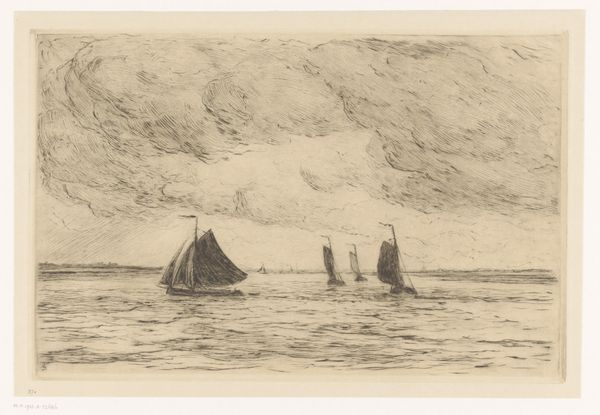![Seacoast by Moonlight [recto] by Edward Moran](/_next/image?url=https%3A%2F%2Fd2w8kbdekdi1gv.cloudfront.net%2FeyJidWNrZXQiOiAiYXJ0ZXJhLWltYWdlcy1idWNrZXQiLCAia2V5IjogImFydHdvcmtzLzIzM2Q2OTdhLTQyZjUtNDkzZi04ODIyLTliYmRmMGY2NDE1NS8yMzNkNjk3YS00MmY1LTQ5M2YtODgyMi05YmJkZjBmNjQxNTVfZnVsbC5qcGciLCAiZWRpdHMiOiB7InJlc2l6ZSI6IHsid2lkdGgiOiAxOTIwLCAiaGVpZ2h0IjogMTkyMCwgImZpdCI6ICJpbnNpZGUifX19&w=3840&q=75)
drawing, pencil, charcoal
#
drawing
#
pencil sketch
#
landscape
#
charcoal drawing
#
pencil drawing
#
pencil
#
charcoal
#
realism
Dimensions: sheet: 10.8 × 17.46 cm (4 1/4 × 6 7/8 in.)
Copyright: National Gallery of Art: CC0 1.0
Curator: This is Edward Moran's "Seacoast by Moonlight," a pencil and charcoal drawing that dates from around 1865 to 1875. Editor: Immediately, I’m struck by the stark contrasts and the subdued palette. It evokes such a solitary mood. Curator: Indeed. Moran was known for his maritime scenes, and he produced them during a period when America was rapidly industrializing, prompting a sense of nostalgia for untouched landscapes. This work taps into that sentiment. Editor: The composition leads the eye. We have these angular rock formations to the right, contrasted by the distant sailing vessels to the left, guiding us through the vast expanse of water, which the artist captures expertly with the luminosity of a moonlit sea. Curator: And how do you see those sharp, jagged lines of the shore speaking to the burgeoning realist movement that sought to portray the unvarnished truth? Editor: Precisely, there is no idealization here, no romanticized vision, just an objective presentation. Also, notice the economy of line. With so few strokes, Moran manages to evoke depth and atmosphere. Curator: That is due in part to his ability to integrate art with the social and political themes of the era, using art to engage broader social conversations and document an evolving cultural landscape. Moran wasn't merely sketching a landscape, but expressing something about America's relationship with its coasts. Editor: You know, looking at it more closely, that stark contrast really adds to that narrative; that isolation is heightened by how the light captures our attention to the sails, directing us away from the shore’s foreground and to the possibility of elsewhere. Curator: His seascapes gained popularity as representations of both American maritime strength and natural beauty, ideals intertwined with national identity at the time. Editor: It is fascinating to observe how, even in such a seemingly simple sketch, you find an invitation for contemplation through form and the interplay of light and shadow. Curator: Right, the way the art mirrors or shapes collective memory is worth understanding, particularly with landscape art, that acts as both mirror and creator. Editor: Very interesting— I was looking at it from the technique of balancing light and shadow, but your point offers an entire different perspective to its appreciation.
Comments
No comments
Be the first to comment and join the conversation on the ultimate creative platform.
